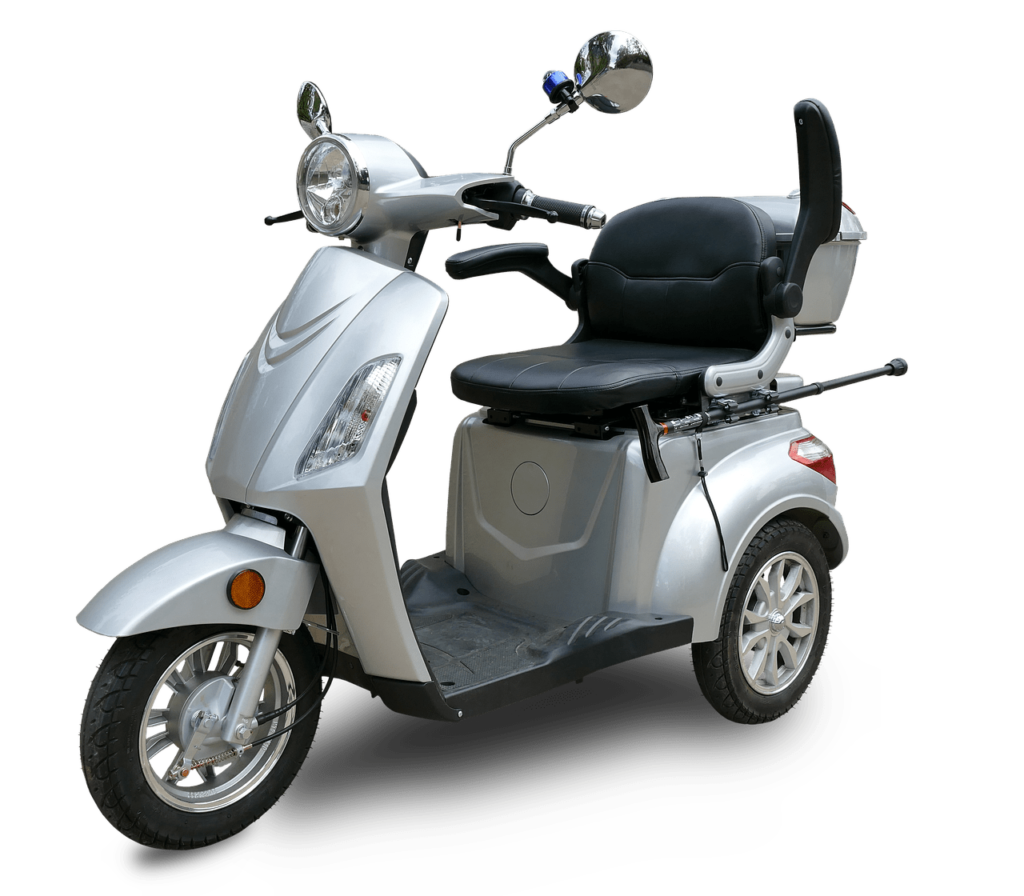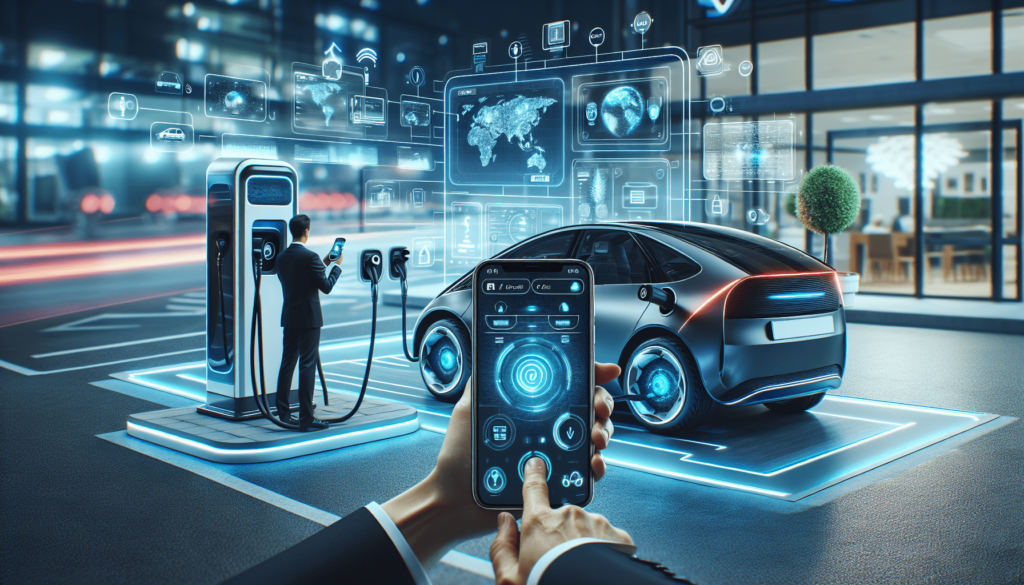In the world of electric vehicles, connectivity and apps have become crucial elements for enhancing the overall driving experience. With technological advancements happening at a rapid pace, it’s not surprising to see a surge in innovations in this particular area. From seamless integration with smartphones to real-time vehicle diagnostics, the connectivity features and apps for electric vehicles are evolving to meet the demands of the modern driver. This article explores the exciting advancements in electric vehicle connectivity and apps, highlighting how they are revolutionizing the way we interact with our cars and making electric driving more convenient and enjoyable than ever before.

This image is property of pixabay.com.
Wireless Connectivity
Bluetooth and Wi-Fi Integration
Wireless connectivity is a key feature of modern electric vehicles (EVs), enabling seamless communication between the vehicle and external devices. Bluetooth and Wi-Fi integration offer a range of benefits to EV owners, making their driving experience more convenient and efficient. Through Bluetooth, you can easily connect your smartphone to your EV, allowing you to make hands-free calls, stream music, and access your phone’s apps. Wi-Fi integration, on the other hand, enables over-the-air software updates, ensuring that your EV always has the latest features and improvements.
Smartphone Integration
Smartphone integration takes electric vehicle connectivity to the next level. By syncing your smartphone with your EV, you can access a wide array of features and functions directly from your phone. From remotely locking and unlocking your vehicle to checking the battery status and range, smartphone integration provides you with real-time information and control over your EV. Additionally, many EV manufacturers offer dedicated mobile apps that allow you to monitor and manage your vehicle’s charging, schedule preconditioning, and even locate nearby charging stations.
Internet Connectivity
Internet connectivity in electric vehicles opens up a world of possibilities. With internet access, your EV becomes a hub of information and entertainment. You can use online navigation services to easily find charging stations and EV-friendly routes. Moreover, internet connectivity enables integration with various telematics services, providing features like safety monitoring, vehicle performance analysis, and even fleet management. Additionally, with internet connectivity, you can stay connected on the go, access web-based apps, and enjoy music streaming services directly in your EV.
Remote Vehicle Control
Locking and Unlocking
Remote vehicle control is one of the most practical features of electric vehicle connectivity. With just a few taps on your smartphone, you can remotely lock or unlock your EV. This comes in handy when you can’t remember if you locked your car or when you want to give access to someone else without needing to physically hand over the keys. Remote locking and unlocking add a layer of convenience and peace of mind to electric vehicle ownership.
Preconditioning
Preconditioning allows you to prepare your EV’s cabin to your desired temperature before you even step inside. With remote access via your smartphone, you can start the air conditioning or heating system while your EV is still plugged in, ensuring a comfortable interior temperature when you’re ready to drive. This feature is particularly useful during extreme weather conditions, as you can avoid the discomfort of getting into a hot or cold vehicle. Preconditioning not only enhances your comfort but also helps preserve your EV’s battery range by using external power while still connected to a charging station.
Charging Control
One of the most critical aspects of electric vehicle ownership is charging management. With remote charging control, you can conveniently monitor and control your EV’s charging process from anywhere. Whether you want to check the charging status, adjust the charging schedule, or even start or stop the charging process remotely, this feature provides you with unparalleled flexibility. This level of control ensures that your EV is always charged when you need it and allows you to make the most of off-peak electricity rates, saving you money in the long run.
Vehicle Monitoring and Diagnostics
Battery Status and Range
Knowing the battery status and remaining range of your electric vehicle is crucial to planning your journeys effectively. With advanced connectivity features, you can easily access real-time information about your EV’s battery, allowing you to determine the optimal time for charging. By keeping track of the battery status and remaining range, you can avoid running out of charge and accurately plan your trips, knowing exactly when and where you need to charge.
Charging Station Availability
Finding available charging stations can be a challenge, especially in regions with limited infrastructure. With vehicle monitoring and connectivity features, you can check the availability of nearby charging stations in real-time. This ensures that you never have to worry about arriving at a charging station only to find it occupied. By having up-to-date information on charging station availability, you can save time and avoid unnecessary detours, making your electric vehicle journeys more efficient and convenient.
Maintenance Reminders
Maintaining an electric vehicle is essential for optimal performance and longevity. With vehicle monitoring and diagnostics, your EV can proactively alert you when it’s time for routine maintenance, such as tire rotations, battery health checks, or software updates. By receiving timely reminders, you can ensure that your EV remains in peak condition, preventing potential issues and extending its lifespan. This proactive approach to maintenance saves you time and effort, as you’ll never have to worry about missing important servicing requirements.
Navigation and Routing
EV-Specific Points of Interest
Electric vehicles have unique requirements when it comes to navigation and routing, and advanced connectivity features cater to these needs. With EV-specific points of interest (POIs), you can easily locate nearby charging stations, restaurants, hotels, and other amenities that are tailored for electric vehicle owners. This information saves you time and helps you plan your journeys effectively by ensuring that you have access to necessary facilities while on the road.
Charging Station Locations
Finding charging stations is a primary concern for electric vehicle owners, and integrated navigation systems address this issue. By displaying charging station locations on your vehicle’s infotainment system or mobile app, you can effortlessly locate nearby charging infrastructure along your route. Knowing the precise locations of charging stations reduces range anxiety and allows for seamless integration of charging stops into your travel plans.
Route Optimization
Electric vehicle connectivity enables advanced route optimization algorithms that consider factors unique to EVs, such as battery range and charging station availability. By leveraging real-time data and connectivity, these systems can calculate the most efficient and time-saving routes for electric vehicles, taking into account charging stops and maximizing range. This feature ensures that you can reach your destination with minimal range anxiety and optimal resource utilization.

This image is property of pixabay.com.
Energy Management
Real-Time Energy Consumption
Having access to real-time energy consumption data allows you to monitor and optimize your electric vehicle’s efficiency. With connectivity features, you can easily view how much energy your EV is using at any given moment. This information helps you adjust your driving style to maximize efficiency, ultimately enhancing your EV’s range. By being aware of how your vehicle consumes energy in different driving conditions, you can make informed decisions to optimize your driving experience.
Efficiency and Range Maximization
Electric vehicle connectivity provides tools and insights to help you maximize efficiency and range. Alongside real-time energy consumption data, you can receive driving tips and suggestions tailored to your specific model, driving style, and prevailing conditions. These recommendations, such as optimal acceleration and deceleration techniques, can help you extract the most range out of your electric vehicle, reducing the frequency and duration of charging stops on long journeys.
Charging Time Optimization
Connectivity features also facilitate charging time optimization by providing accurate charging time estimates and recommendations. By inputting your desired departure time or desired charge level, your EV’s system can calculate the optimal charging schedule to ensure your vehicle is ready on time. This feature eliminates guesswork and inconvenience, allowing you to plan your charging sessions effectively, avoid unnecessary waiting time, and seamlessly integrate charging into your daily routine.
Telematics Services
Insurance and Safety Monitoring
Telematics services enabled by electric vehicle connectivity offer enhanced safety and security features, providing peace of mind to EV owners. With integrated systems, insurers can access real-time data, such as vehicle speed, distance traveled, and driving behavior, to calculate insurance premiums accurately. Furthermore, in the event of an accident, telematics can automatically notify emergency services, providing crucial information like your vehicle’s location and impact severity.
Vehicle Performance Analysis
With advanced connectivity, you can gain valuable insights into your EV’s performance. Telematics systems collect data on various metrics, such as battery efficiency, energy consumption, and driving patterns. This information allows you to track your vehicle’s performance over time, identifying trends and areas for improvement. By analyzing these performance metrics, you can optimize your driving habits, better understand your EV’s capabilities, and potentially increase its overall efficiency.
Fleet Management
For businesses that operate electric vehicle fleets, connectivity features play a vital role in fleet management. By leveraging telematics services, fleet managers can remotely monitor the status and performance of each vehicle in their fleet. This access to real-time data allows for proactive maintenance scheduling, efficient routing, and optimized resource allocation. Additionally, by analyzing individual vehicle performance and driving patterns, fleet managers can identify opportunities for driver training, energy-saving initiatives, and overall cost optimization.

This image is property of pixabay.com.
User-Interface Enhancements
Intuitive Dashboards
User-interface enhancements in electric vehicles focus on providing an intuitive and user-friendly experience. Modern EVs feature dashboards that display key information, such as battery status, range, and energy consumption, in a clear and easily understandable manner. The integration of connectivity features allows for seamless communication between the vehicle and the driver, ensuring that vital information is readily accessible and easily interpreted, contributing to a safer and more enjoyable driving experience.
Customizable Settings
Every driver has unique preferences, and customizable settings cater to individual needs. Electric vehicles with comprehensive connectivity options offer personalized settings for various features, such as climate control, seat adjustments, and driver assistance systems. By tailoring these settings to your liking, you can create a personalized and comfortable driving environment that matches your preferences, ensuring a convenient and enjoyable driving experience every time you get behind the wheel.
Voice Commands
Voice commands have become an increasingly popular feature across various industries, and electric vehicle connectivity is no exception. With integrated voice recognition technology, you can control various aspects of your EV simply by speaking commands. From adjusting climate settings to making phone calls and even playing your favorite music, voice commands offer a hands-free and convenient way to interact with your vehicle while keeping your focus on the road. This feature enhances safety and accessibility, providing a truly hands-free driving experience.
Smart Grid Integration
Demand Response Programs
Smart grid integration allows electric vehicles to participate in demand response programs, promoting energy efficiency and grid stability. By utilizing bi-directional communication with utility companies, EVs can receive signals indicating periods of high or low electricity demand. During high demand periods, EVs can reduce or postpone charging to relieve stress on the grid. Conversely, during low demand periods or when there is an excess of renewable energy generation, the battery in an EV can be used to supply electricity back to the grid, contributing to a more sustainable energy ecosystem.
Vehicle-to-Grid Communication
Vehicle-to-grid (V2G) communication enables the seamless exchange of energy between electric vehicles and the power grid. With this integration, EVs can act as mobile energy storage units, allowing excess power from renewable sources to be stored in their batteries and delivered back to the grid when needed. This bidirectional flow of energy supports grid stability, promotes renewable energy utilization, and can potentially provide financial incentives to EV owners through energy market participation.
Grid-Optimized Charging
Grid-optimized charging leverages smart charging algorithms that factor in real-time electricity prices, grid demand, and renewable energy availability. By integrating with smart grid systems, electric vehicles can automatically adjust their charging schedule based on these factors. This optimization not only helps reduce electricity costs for vehicle owners but also ensures that EV charging aligns with periods of high renewable energy generation. Grid-optimized charging plays a crucial role in maximizing the utilization of renewable energy and reducing the overall environmental impact of electric vehicles.

Enhanced Safety Features
Collision Avoidance Systems
Electric vehicles equipped with enhanced connectivity often feature advanced collision avoidance systems. These systems utilize a combination of sensors, cameras, and connectivity features to detect potential collisions and alert drivers through visual and auditory warnings. In some cases, these systems can also intervene by automatically applying braking or steering corrections to avoid a collision. Enhanced safety features, enabled by connectivity, contribute to reducing accidents and improving road safety for both EV drivers and other road users.
Pedestrian and Cyclist Alerts
Concern for pedestrian and cyclist safety has led to the development of alert systems specifically designed to detect and warn of their presence. By utilizing connectivity and various sensors, electric vehicles can identify pedestrians and cyclists in close proximity and provide visual and auditory alerts to drivers. These alerts enhance driver awareness, particularly in urban environments or areas with heavy pedestrian and cyclist traffic, minimizing the risk of accidents and promoting safer road-sharing practices.
Emergency Assistance Calls
In the event of an accident or emergency, electric vehicle connectivity allows for immediate access to assistance. Through features like automatic crash notification, emergency assistance calls can be automatically initiated in the event of a severe impact. These calls provide vital information, such as the vehicle’s location and impact severity, to emergency services, ensuring a swift response. This integration of connectivity and safety features helps enhance driver and passenger safety, providing peace of mind while on the road.
Third-Party App Integration
Music Streaming
In-vehicle entertainment is an essential aspect of the driving experience, and third-party app integration allows for seamless access to your favorite music streaming services. With connectivity features, you can link your preferred music streaming app to your electric vehicle’s infotainment system, allowing you to enjoy your favorite music, podcasts, or audiobooks during your journeys. This integration ensures that you can have the entertainment you love, without the need for additional devices or distractions while driving.
Parking Assistance
Parking can sometimes be a challenging task, especially in crowded urban areas. Third-party app integration offers parking assistance features that assist in finding and booking parking spaces. These apps provide real-time information on parking availability, pricing, and even guide you to the closest parking facilities. By seamlessly integrating parking assistance apps with your electric vehicle’s navigation system, you can minimize the time spent searching for parking spaces and reduce the stress associated with city driving.
Food and Entertainment Services
Electric vehicle connectivity offers access to a variety of third-party apps that enhance your driving experience by providing information on nearby food and entertainment services. Integration with popular review and recommendation apps allows you to discover restaurants, cafes, and other dining options in close proximity to your location. Likewise, you can explore nearby attractions, theaters, or cultural events, ensuring that you can fully enjoy your journeys beyond just getting from point A to point B.
In conclusion, electric vehicle connectivity and app advancements have revolutionized the driving experience for EV owners. Through wireless connectivity, smartphone integration, and internet access, electric vehicles offer enhanced convenience, efficiency, and entertainment options. Remote vehicle control features like locking and unlocking, preconditioning, and charging control provide unprecedented convenience and flexibility. Vehicle monitoring and diagnostics allow EV owners to stay informed about battery status, maintenance requirements, and charging station availability. Navigation and routing features cater specifically to EV needs, such as locating charging stations and optimizing routes. Energy management capabilities help maximize efficiency, range, and charging time optimization. Telematics services provide safety monitoring, performance analysis, and fleet management options. User interface enhancements, smart grid integration, enhanced safety features, and third-party app integration further enhance the overall electric vehicle experience. As technology continues to advance, the possibilities of electric vehicle connectivity and apps are boundless, ensuring a brighter future for electric mobility.


